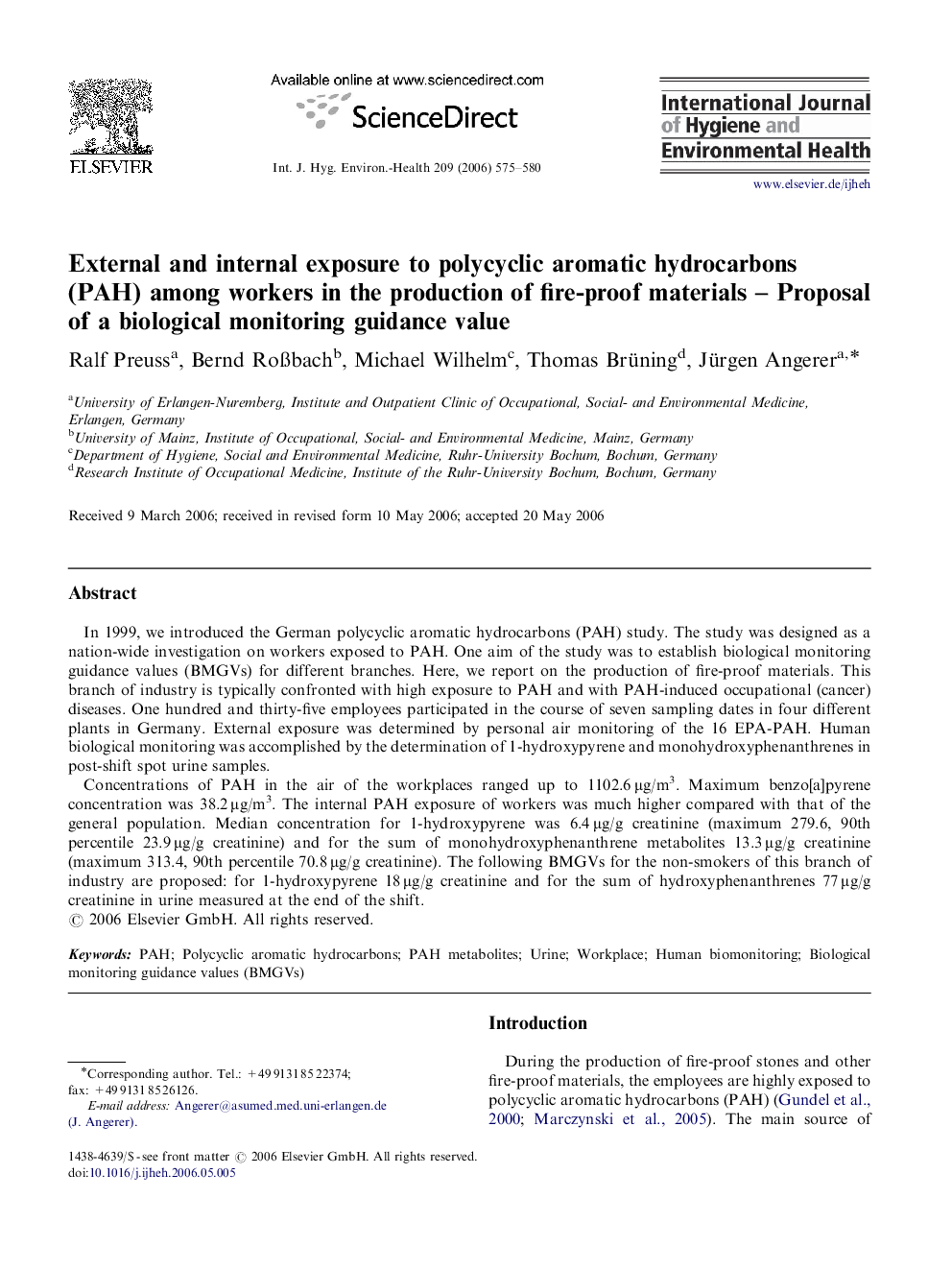| Article ID | Journal | Published Year | Pages | File Type |
|---|---|---|---|---|
| 2589238 | International Journal of Hygiene and Environmental Health | 2006 | 6 Pages |
In 1999, we introduced the German polycyclic aromatic hydrocarbons (PAH) study. The study was designed as a nation-wide investigation on workers exposed to PAH. One aim of the study was to establish biological monitoring guidance values (BMGVs) for different branches. Here, we report on the production of fire-proof materials. This branch of industry is typically confronted with high exposure to PAH and with PAH-induced occupational (cancer) diseases. One hundred and thirty-five employees participated in the course of seven sampling dates in four different plants in Germany. External exposure was determined by personal air monitoring of the 16 EPA-PAH. Human biological monitoring was accomplished by the determination of 1-hydroxypyrene and monohydroxyphenanthrenes in post-shift spot urine samples.Concentrations of PAH in the air of the workplaces ranged up to 1102.6 μg/m3. Maximum benzo[a]pyrene concentration was 38.2 μg/m3. The internal PAH exposure of workers was much higher compared with that of the general population. Median concentration for 1-hydroxypyrene was 6.4 μg/g creatinine (maximum 279.6, 90th percentile 23.9 μg/g creatinine) and for the sum of monohydroxyphenanthrene metabolites 13.3 μg/g creatinine (maximum 313.4, 90th percentile 70.8 μg/g creatinine). The following BMGVs for the non-smokers of this branch of industry are proposed: for 1-hydroxypyrene 18 μg/g creatinine and for the sum of hydroxyphenanthrenes 77 μg/g creatinine in urine measured at the end of the shift.
